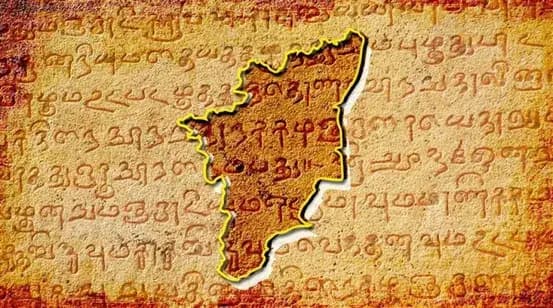The Timeless Wings of the Tamil Language

Tamil is not an average regional language
it is one of the few classical languages still spoken today, tracing its origins back thousands of years. Linguists affirm that Tamil is a prominent member of the Dravidian language family, believed to have originated as early as 3000 BCE—possibly in the region southwest of the Godavari River. This predates most classical languages and gives Tamil a continuous recorded history of over 4,000 years.
A Living Language Rooted in Antiquity
Tamil's uniqueness lies not just in its age, but in its linguistic integrity. The Tamil spoken near the Vaigai River in 500 BCE is remarkably similar to what is spoken there today. This unbroken continuity sets Tamil apart as a rare case of linguistic endurance.
Tamil-Brahmi Script: Archaeological Evidence
Tamil-Brahmi inscriptions have been found on cave walls, pottery, and utensils dating from the 3rd century BCE to the 1st century CE. Sites like Adichanallur and Keezhadi have yielded artifacts with Tamil-Brahmi writing from as early as 580 BCE, supporting the language's antiquity. Tamil script evolved from Tamil-Brahmi, diverging from North Indian Brahmi and forming the rounded script still used today.
Sangam Literature: The Golden Literary Era
The Sangam period (300 BCE–300 CE) is considered the first modern Tamil literary age. Though the first two Sangams are mythical, the third Sangam—based in ancient Madurai—produced literary gems like:
- Ettuthogai and Pattuppāṭṭu: Anthologies celebrating love, valor, ethics, and nature.
- Tirukkural: A moral and philosophical text with 1,330 aphorisms; a globally respected classic.
- Silappadikaram and Manimekalai: Epic poems blending emotion, philosophy, and drama.
These texts reflect a profound literary tradition that continues to be translated and studied worldwide.
Tolkappiyam: India’s First Known Grammar Book
The Tolkappiyam, written around the 2nd century BCE, is Tamil’s oldest known grammar and one of India’s earliest linguistic texts. With over 1,600 sutras, it explains Tamil phonetics, grammar, and semantics in extraordinary detail, making it an essential bridge between ancient and classical Tamil.
Middle Tamil and Modernization
From 700 to 1600 CE, Middle Tamil evolved with new vocabulary and pronunciation. Religious hymns, ethical verses, and devotional poetry thrived. In the 16th century, printing technology brought Tamil books to the public, beginning with Thambiran Vanakkam in 1578. Over time, despite changes, Tamil retained its linguistic sovereignty even under translation influence.
Debates on Tamil’s Origins
Many scholars argue Tamil predates Sanskrit, Latin, and Greek. M. Srinivasa Iyengar claimed the Tolkappiyam was written before 350 BCE. Some Sangam poems are also believed to predate the 5th century BCE. Discoveries at Adichanallur hint at Tamil cultural roots as early as 1500 BCE, strengthening these claims. Yet, linguistic remnants from over 5,000 years ago remain open to further archaeological confirmation.
Cultural Continuity: Tamil Still Spoken Today
Unlike Latin or Sanskrit (largely liturgical), Tamil is a living language—spoken daily for over 2,500 years. Its grammar, phonetics, and syntactic consistency offer a rare glimpse into a language that has aged without decay.
Scientific Relevance & National Identity
In the 20th century, the Pure Tamil Movement led by scholars like Devaneya Pavanar sought to eliminate Sanskrit loanwords and restore Tamil purity. While this invited international linguistic scrutiny, it also highlighted Tamil’s resilience and adaptability.
Tamil’s official recognition as a classical language by the Indian government acknowledges its historical depth, rich literature, and self-sustained evolution. Spoken by over 80 million people worldwide, including communities in Sri Lanka, Singapore, and Malaysia, Tamil is now studied in fields like linguistics, AI voice processing, and natural language modeling.
A Legacy Across Time
The timeline of Tamil's evolution:
- Tamil-Brahmi Script (3rd century BCE – 1st century CE)
- Tolkappiyam (Oldest grammar text)
- Sangam Literature (2,300+ poems by 500+ poets)
- Middle Tamil Period (Bhakti poems, temple literature)
- Modern Tamil Printing (16th century onwards)
- Digital Era Tamil (AI commands, multilingual translations)
Conclusion
Tamil’s greatness lies not merely in its age, but in its unbroken cultural narrative, intellectual depth, and ongoing global relevance. Its legacy continues to thrive in literature, education, cinema, and digital media. Spoken fluently even today—for over 2,500 years—Tamil remains a language of elegance, endurance, and immense pride.